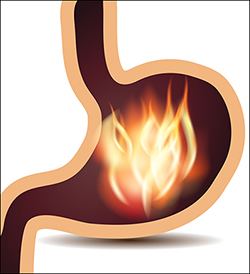Vitamins and their functions
METABOLISM AND VITAMINES AND MINERALS
METABOLISM
Anabolism - It is a constructive process. It leads to building up of fresh tissues from nutritive materials of food.
Catabolism - It is a destructive process. It leads to break down of worn out tissues and their removal. For health anabolism and catabolism should be maintained at a balance. Health is affected when this balance is upset.
Energy of the body and its sources-the body requires energy for maintaining its vital functions. In the body, energy is derived from food. Following are the sources of energy present in food.
Carbohydrates and Fats - are sources of energy for work and heat.
Proteins - are sources of energy for growth and repair.
Vitamins and Salts - are sources of energy for vital functions.
VITAMINS
Vitamins are essential nutrients which are required in small amounts for normal metabolism.
Classifications of Vitamins
Vitamins are classified in to :
1. Fat Soluble Vitamins -Vitamin A, D, E and K.
2. Water Soluble Vitamins -Vitamin B complex and Vitamin C.
FAT SOLUBLE VITAMINS
Vitamin A - It is an unsaturated alcohol. Carotene is the precursor of vitamin A.
Sources - Carotenes are present in carrot, spinach and green vegetables. It is also present in dairy products like milk, butter and cheese.
Defficiency - The deficiency of Vitamin A leads to Nyctolopia (Night blindness), Xerophthalmia (Failure of tear secretion).
Vitamin D - Also known as Calciferol.
Sources - Egg, butter milk and cod liver oil.Sun light converts dehydrocholesterol of skin in to Vitamin D.
Defficiency - Defficiency of vitamin D produces rickets in children and osteomalacia in adults. These two diseases are characterized by deformities of bones.
Vitamin E - Also known as alpha tocopherol.
Sources - Soyabean oil, wheat germ oil and rice germ oil.
Defficiency - The deficiency of Vitamin E leads to Abortion and sterlity in animals, No symptom has been established in human.
Vitamin K
Sources - Spinach and other green vegetables. Bacteria present in intestine also synthesise vitamin K.
Defficiency - The deficiency of Vitamin K leads to Increased bleeding due to effective clotting mechanism.
WATER SOLUBLE VITAMINES
Vitamin B -1 (Thiamine)
Sources - Peas, beans, oatmeal, pea nuts, vegetables and fruits.
Defficiency - Defficiency of thiamin produces Beri beri (a symptom complex with characterstic neuropathy) and Wernickes encephalopathy characterized by confusion, ophthalmoplegia, nystagmus and tremors.
Vitamine B-2 (Riboflavine)
Sources - Egg, milk and vegetables.
Defficiency - Soreness of lips and redness of eyes.
Vitamin B-3 (Nicotinic Acid)
Sources - Milk, eggs, rice, potatoes and vegetables.
Defficiency - Pellegra characterized by dermatitis, diarrhea and mental confusion.
Vitamin B-6 (Pyridoxine)
Sources -Yeast, cereals, legumes, milk.
Defficiency - Irritability, abdominal distention, loss of body weight and anemia in children. In adults the deffeciency produces lesions of skin and mouth, peripheral neuritis and mental changes.
Vitamin B-8 (Pantothenic Acid)
Sources -Yeast, wheat, pea nuts, milk .
Defficiency - Keratitis, dermatitis, neuromuscular degeneration and adreno cortical insufficiency in animals. In humans the deficiency produces fatigue, malaise, nausea and flatulence.
Vitamin B-12 (Cyanocobalamine)
Sources - Egg and milk. Also present in leguminous plants in small quantity.
Defficiency - Defficiency of cyanocobalamine leads to megaloblastic anemia. Both cyanocobalamine and folic acid require for the development of blood cells.
Folic Acid
Sources - Rich in vegetarian food like cabbage, spinach and all green vegetables. Non vegetarian food contains less folic acid.





![ACHARA RASAYAN in Ayurveda [Behavioural regimen which acts as Rejuvenation]](https://blogger.googleusercontent.com/img/b/R29vZ2xl/AVvXsEgWmm8CupFTu_vyWDtEsY9EdG8A-ZlQLOdx6lrm4qnctDJ1bli1zR7MQMebwL79XhXowikAcqIk-al0sQubhTttS6H69e3zIBK-UORc5BFH9eaWwkznPG-yWHqoQ-za1gNhVqwgwomwUiKA/w680/Screenshot_20191227-154658_YouTube.jpg)

0 Comments